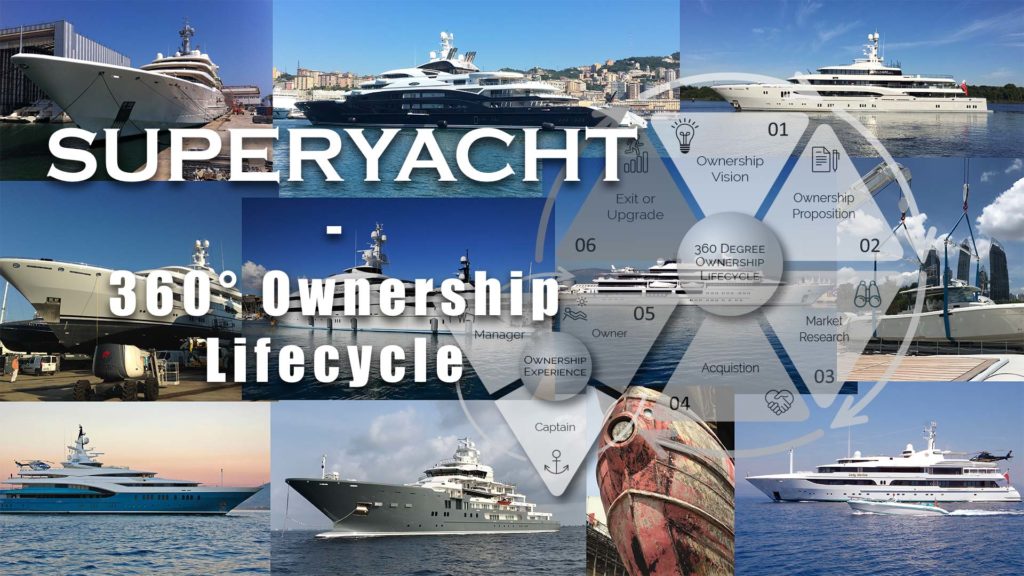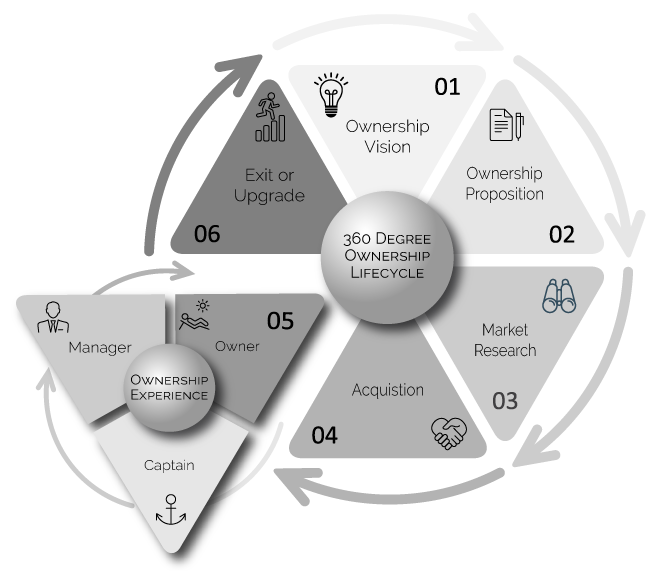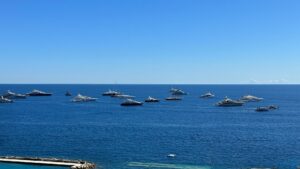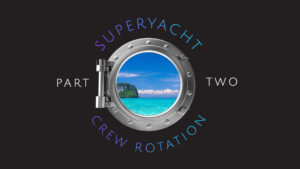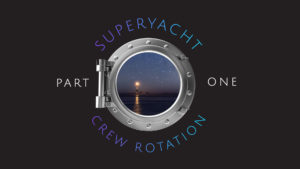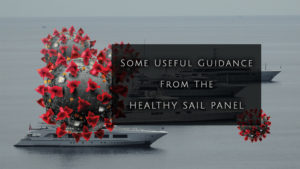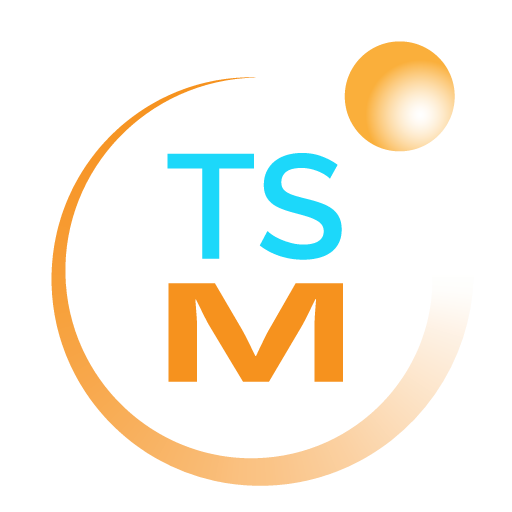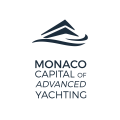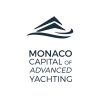I suspect most readers will have heard about yacht owners who have had a bad experience for various reasons, such as yachts that didn’t meet their expectations, issues with crew and, financial shock when the true cost of running a yacht becomes clear. And, I’m sure all would agree, that any situation where a negative experience may precipitate an owners departure from the industry, and consequential negative PR, is bad for our industry.
What leads to this disappointment and disillusionment? Could it be that they entered into yachting without taking the time to ask the right questions e.g. what are their yachting aspirations, what type of yacht would they be happiest with, why the recommended yacht seems such a bargain, did that of-the-shelf budget accurately reflect the actual costs, what was the quality of advice, and so on…
“Did that of-the-shelf budget accurately reflect the actual costs?”
For over three decades in my role as captain, I have worked closely with owners and their teams and there is no doubt that the quality of their ownership experience relied heavily on them being properly informed and that advice/recommendations given, was backed up with solid research and proper cost analysis. I also realised that this approach was a key component for success throughout the whole ownership lifecycle.
Based on that insight, I set about trying to describe what an ideal lifecycle might look like, one where there was a pathway to considered decision making. The result is the idea below, the ‘360 Degree Ownership Lifecycle’ which serves as a guide to navigate the ownership journey; taking each stage a step-at-a-time, to ensure that owners are properly informed and that the overall experience measures up to an owners original vision.
As you can see it starts with an owner defining their Ownership Vision and follows a series of stages that help to define their ideal yacht, aspirations and validate their decisions. It culminates in ownership – the experiential side of yacht ownership – and, if it has been a positive experience, ends with an upgrade to a larger yacht where the cycle starts all over again.
The following is an overview of the various stages.
 Ownership Vision
Ownership Vision
Once an owner has decided that yachting is for them, it is useful to take a step back and and examine the reasons behind their decision? Time spent here will impact on many decisions, create the framework and foundation for yacht ownership and provide a future measure of success – did the reality live up to their expectations?
It’s a needs analysis, a process of understanding how an owner intends to use their yacht including; what features are important, how many guests, speed vs. comfort (often a trade-off) blue water or coastal cruising, family and friends or, a business platform, the experience or, the show, and other sensitivities such as privacy, security, cost, crew numbers.
An important point is that phase 1 and 6 are closely linked. The final disposal or, future upgrade, should also be considered at this point as decisions made at the beginning of the process can affect the future resale value and marketability of a yacht, not least things like the shipyard, age, maintenance levels and build specification.
 Ownership Proposition
Ownership Proposition
The ideal yacht, preferences and operational profile have now been defined and armed with this information the practical considerations of owning a yacht, including, cost, operation and management can be developed.
“What will it cost to run the yacht” is a key question and, as I have written in my article ‘Superyachts – The Art of the Budget’ the idea that running costs are 10% of the value of the yacht or, that an off the shelf budget for a similar yacht will suffice, is somewhat of a myth and has often lead to disappointment.
“What will it cost to run the yacht, is a key question.”
There are many variables that need to be considered and modelled. Factors include cruise itineraries and preferences, one or two seasons, crew numbers and terms of employment e.g. rotational, maintenance – a five-year cycle should be considered as this will capture major expenditure such as dry docking, survey, engine/generator overhaul and paint jobs. Taking time to develop the budget model and, adjust as neccessary, can significantly help avoid future financial shock.
Whilst many owners have family offices that manage their portfolio of assets, they may not have the necessary knowledge, time or resources to take onboard the management of a yacht. So, it is important to assess the most suitable model for any given owner. Will they be comfortable with self-management, prefer full management or, use a hybrid-model where they outsource specific elements such as safety management and crew employment, but retain control of the day-to-day operation and liaison with the yachts team.
Other aspects include private or charter, regulatory framework, flag state, ownership structure, insurance and tax considerations, which will require additional input from experts in their fields.
The focus on the reality and cost of ownership will help with the decision to continue with the project, reassess priorities or, move to the next stage.
 Market Research
Market Research
Now the profile of the ideal yacht has been defined and finessed and, the owner is comfortable with the costs, operation and management structure, they can now consider the options e.g. existing yacht, or new build and start looking at available yachts, designers and shipyards.
New-build, semi-custom and more so full-custom yachts, require time and effort to develop the full build specification. It will be necessary to engage a team to develop and manage the project, choose a designer that suits an owners style and their desired level of engagement in the process, evaluate potential shipyards (including due diligence) and fully cost the whole project. Time spent here refining the detail and specification will pay dividends in the future by helping reduce variations to contract (VTC) and potential time/cost overruns and provide the metrics to gauge performance.
“Time spent here refining the detail and specification will pay dividends in the future.”
If time is an issue, the quickest route to ownership will be via an existing yacht – providing there is one available that either meets the desired specification previously defined or, one that is as close as possible.
Inevitably, most owners will make modifications and/or upgrades to a used yacht, to add features, change layout, interior furnishings/fabrics, upgrade AV/IT, etc. and those costs – which may not be recovered on resale – should be properly assessed. And, of course, the age and condition of the yacht and where it sits in the maintenance cycle will also be important considerations.
This is where an established and reputable yacht broker can assist. They will have great market intelligence, including off-market sales, insight on real value and the strength and marketability of various yachts and brands – important for future resale – as well as shipyards and slot availability. And, of course, they can help negotiate the best deal during the acquisition stage.
 Acquisition
Acquisition
An owner is now in a position where they can proceed with a purchase with an increased level of confidence.
With an existing yacht it is crucial to complete a full survey that includes both a physical inspection and an inspection of the various certificates and maintenance records to ensure the yacht is as described. This should be undertaken by a company who specialises in yacht surveys and, age, though relevant, should not mean that a survey should be any less rigorous on recent launches as even these vessels may have issues with systems, engineering or finish.
In parallel with the purchase process, the ownership structure and tax considerations, flag state choice, regulatory framework and management model previously identified, can be readied for execution upon the final agreement to purchase.
 Ownership
Ownership
This is where the true value of yacht ownership will be realised and, as mentioned, this is the experiential stage where an owner finally gets to see whether the reality lives up to their vision and expectations.
Key to the ownership success will be the fun and enjoyment an owner experiences onboard with family and friends and, along with the technical and physical attributes of the yacht, the crew will play a significant role in this.
Selecting the right captain, officers and crew, who are motivated to deliver on an owners vision and priorities is fundamental. As most readers will know this can be a challenge but, time spent selecting the team will make a huge difference to the success.
“Selecting the right captain, officers and crew who are motivated to deliver on an owners vision and priorities is fundamental.”
The tripartite structure of owner, captain and management can also have an impact on the ownership experience, and it is important that is a collaborative arrangement with defined levels of authority and responsibility, and clear lines of communication. The benefit of such a structure is that once the operational parameters and budgets are agreed the owner should be free to enjoy their yacht without troubling themselves with the day-to-day operation, this will be for the captain, senior officers and management company to control.
 Exit or Upgrade
Exit or Upgrade
Following this process, we assume that the ownership experience has exceeded all expectations and the owner has decided to upgrade to a larger yacht. This then brings them right back to the very beginning where the process of defining the new vision and expectations for their next yacht begins again – this time armed with even more valuable knowledge!
Yachting is often described as ‘the ultimate discretionary expense’ so it is in our interest to deliver positive ownership experiences. After all, happy owners are our life-blood, the superyacht industries greatest advocates, and crucial to our future growth and long term sustainability. Maybe this structured approach can help?

